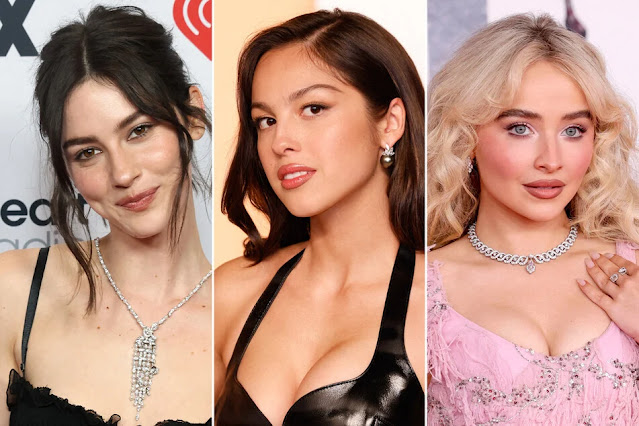Lollapalooza 2025 has stirred up heated debates with its announcement that pop stars Sabrina Carpenter and Olivia Rodrigo will be headlining the festival. While both artists have undeniable talent and strong fanbases, their placement as headliners for an event traditionally dominated by rock, hip-hop, and alternative acts has sparked controversy. Many festival-goers and music enthusiasts are questioning whether their inclusion aligns with Lollapalooza’s legacy and if their musical styles are suited for the event.
Lollapalooza began as an alternative rock festival in 1991, spearheaded by Jane’s Addiction frontman Perry Farrell. Over the years, it has expanded its lineup to include hip-hop, EDM, and pop artists. However, its foundation remains deeply rooted in alternative and rock music. Headliners like Foo Fighters, Red Hot Chili Peppers, Metallica, and Radiohead have cemented its reputation as a premier destination for fans of these genres.
The inclusion of Sabrina Carpenter and Olivia Rodrigo—both predominantly known for their mainstream pop appeal—represents a shift that many believe strays too far from Lollapalooza’s original essence. While pop artists such as Lady Gaga and Ariana Grande have graced similar festival stages, their musical influences and performances aligned more closely with the festival’s traditional energy.
Sabrina Carpenter has successfully transitioned from a Disney Channel star to a rising pop sensation. While she has released several well-received albums and gained traction with hits like Feather and Nonsense, her discography does not yet match the depth or global impact of previous Lollapalooza headliners.
Olivia Rodrigo shot to stardom with her debut album SOUR and its breakout hit drivers license. Her follow-up album GUTS solidified her status as a Gen Z superstar. While Rodrigo has certainly achieved impressive commercial success, some critics argue that she lacks the extensive touring and live performance experience that other festival headliners bring to the table.
Lollapalooza’s audience has traditionally skewed toward fans of rock, alternative, and electronic music. While pop music has gradually found a place at festivals like Coachella, Glastonbury, and Lollapalooza, the decision to place two pop stars in headline slots has raised concerns about whether the festival is moving away from its roots.
Many fans argue that the energy, instrumentation, and live performance styles of Sabrina Carpenter and Olivia Rodrigo do not align with the high-energy rock and alternative acts that typically dominate the festival. Unlike past headliners such as Muse or Pearl Jam, whose performances are renowned for their electrifying stage presence and instrumental prowess, Rodrigo and Carpenter’s shows are more focused on vocal performances and choreography.
Another criticism of Lollapalooza’s decision is the increasing dominance of pop acts across major festivals. While pop music is undeniably mainstream, festival-goers who attend events like Lollapalooza expect a diverse mix of artists across genres. Some argue that booking two mainstream pop artists as headliners diminishes the variety and risks alienating fans of rock, indie, and hip-hop, who have historically been the festival’s core audience.
Following the announcement, social media platforms erupted with mixed reactions. While die-hard fans of Carpenter and Rodrigo celebrated the news, long-time festival attendees voiced disappointment, arguing that Lollapalooza is losing its distinct identity in favor of commercial appeal.
Music critics and industry professionals have also chimed in. Some believe that Lollapalooza is making a smart business move by catering to a younger demographic that consumes pop music at higher rates. Others feel that this shift could dilute the festival’s credibility as a premier destination for alternative and rock music fans.
From a commercial perspective, the inclusion of Olivia Rodrigo and Sabrina Carpenter could boost ticket sales, particularly among younger audiences. However, longtime Lollapalooza attendees may feel alienated, leading to lower attendance from festival purists. The festival organizers will need to balance commercial success with maintaining the event’s identity.
Previous headliners such as The Strokes, Kendrick Lamar, and The Weeknd brought a blend of different genres, ensuring a well-rounded lineup. The decision to place two relatively new pop artists in headline slots raises concerns about whether Lollapalooza is prioritizing chart success over musical diversity and experience.
If this shift towards pop headliners continues, Lollapalooza may risk losing its core audience and transforming into a mainstream commercial festival, rather than a festival that showcases alternative, indie, and rock talent. While evolution is natural, maintaining a balance between legacy acts and newer pop artists may be crucial to the festival’s longevity.
Sabrina Carpenter and Olivia Rodrigo are undoubtedly talented artists with massive followings, but their placement as Lollapalooza 2025 headliners has sparked debate. Many fans and critics question whether their inclusion aligns with the festival’s legacy and whether it signals a broader shift away from Lollapalooza’s alternative roots. As the festival landscape continues to evolve, only time will tell whether this decision will be seen as a bold new direction or a misstep that alienates long-time fans.





